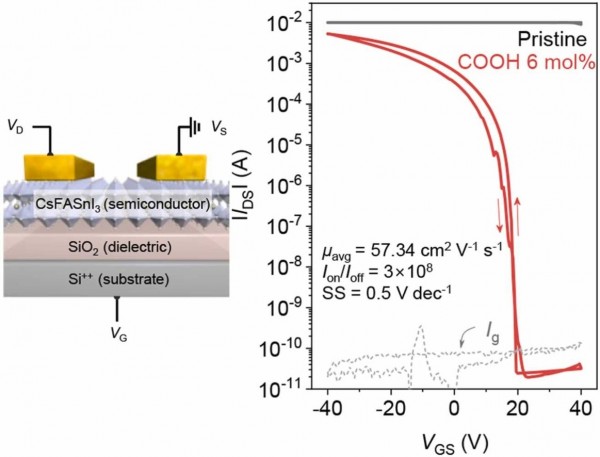High-performance tin perovskite transistors through formate pseudohalide engineering
- 저자
- Geonwoong Park, Wonryeol Yang, Ao Liu*, Huihui Zhu*, Filippo De Angelis, Yong-Young Noh*
- 저널명
- Materials Science and Engineering: R: Reports, 159, 100806 (2024)
- 년도
- 2024
- Link
- https://doi.org/10.1016/j.mser.2024.100806 562회 연결
[Abstract]
The lack of high-performance p-type semiconducting materials hinders the integration of complementary metal-oxide semiconductors with well-established n-type metal-oxide counterparts. Although tin halide perovskites are promising p-type material candidates, their practical implementation is hindered by excessive hole concentrations and difficulties in precisely controlling crystallization, which leads to poor device performance and yield. In this paper, we propose a formate pseudohalide engineering method to overcome these issues and demonstrate high-performance tin perovskite thin-film transistors (TFTs). The incorporation of formate anion greatly suppresses the vacancy defects at the surfaces of the perovskite films with an increase in crystallinity and grain size. This reduces the hole concentration and eliminates the dependence on the addition of excessive tin fluoride for hole suppression. Hence, high-performance TFTs with a high average field-effect hole mobility of 57.34 cm2 V−1 s−1 and on/off current ratios surpassing 108 can be achieved, approaching p-channel low-temperature polysilicon devices.
